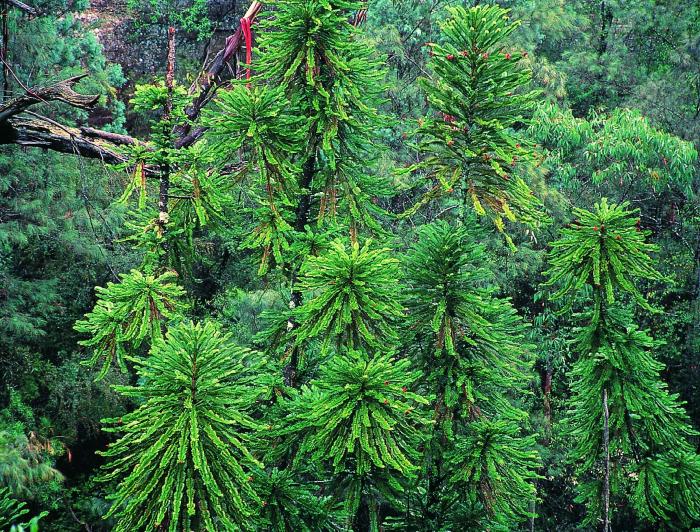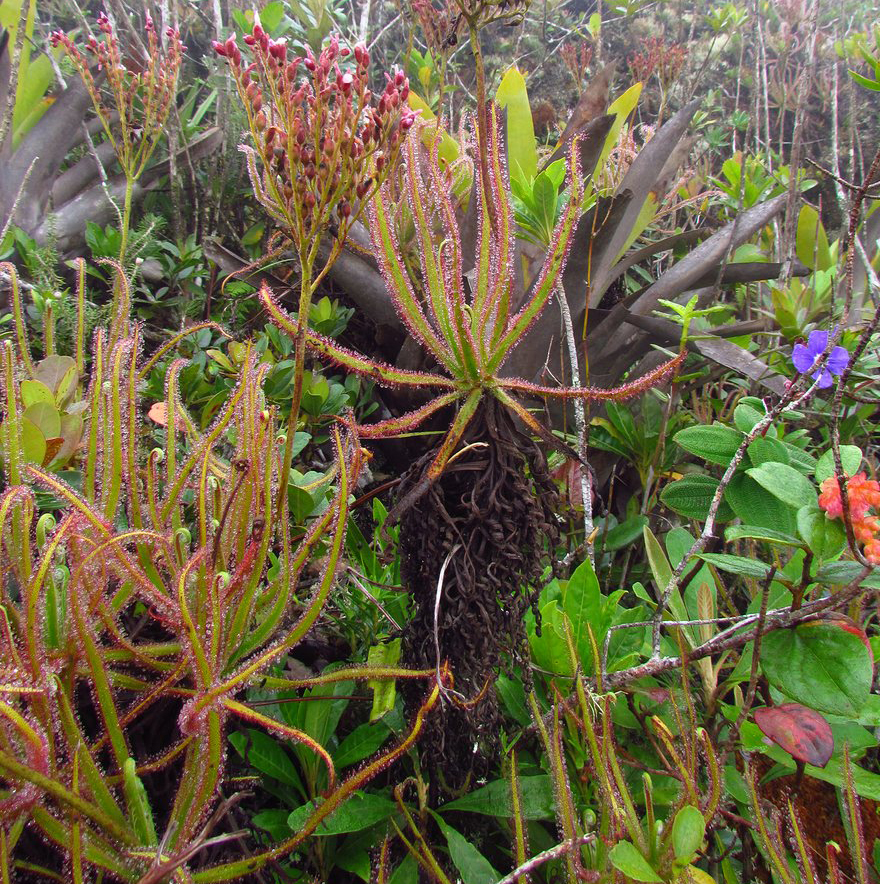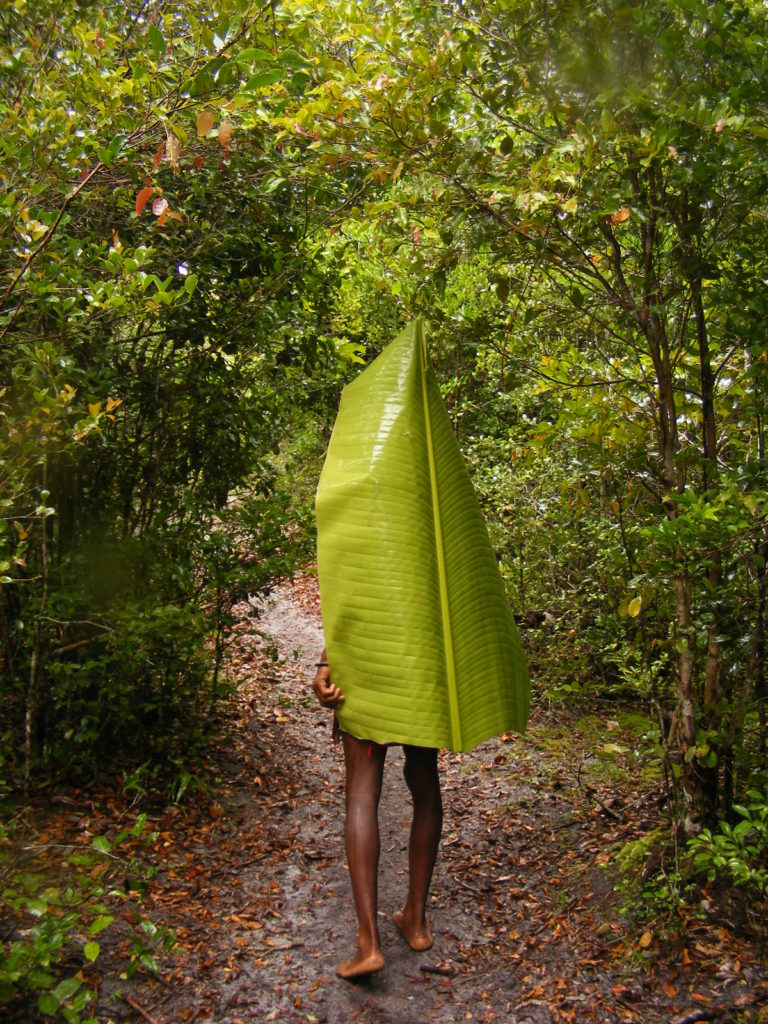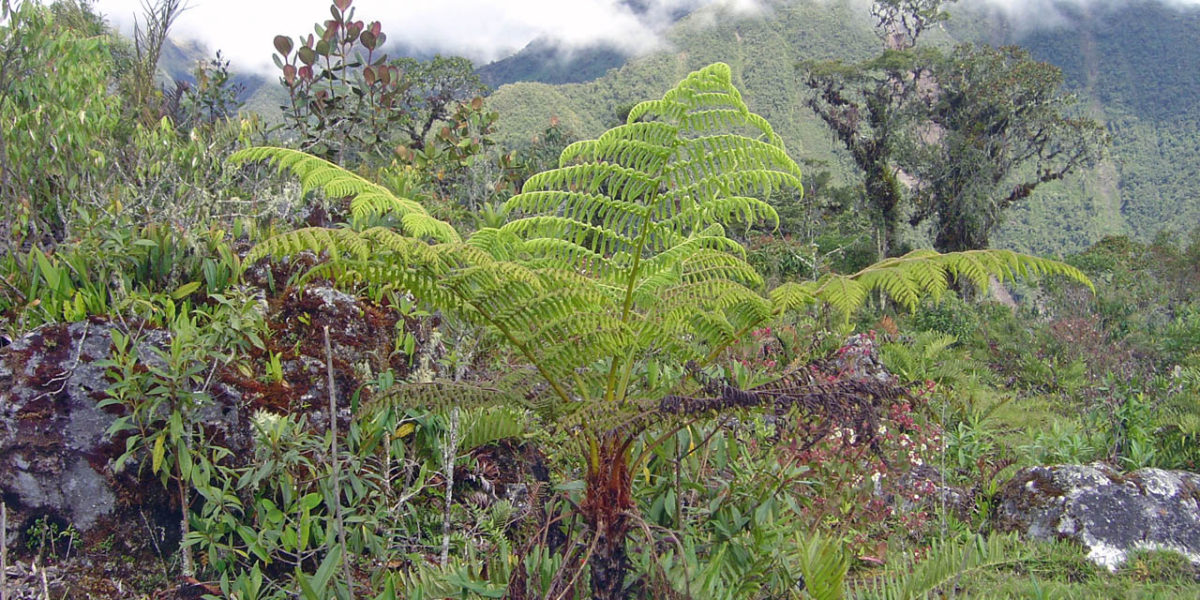Peter Wyse Jackson, president of the Missouri Botanical Garden (MBG) and the George Engelmann Professor of Botany at Washington University in St. Louis, looks more like a kindly uncle than an environmental advocate. But appearances can be deceiving, because he is a world leader in the fight to save plant species from extinction.
In 2000, Wyse Jackson and a small group of botanists drafted a Global Strategy for Plant Conservation (GSPC). In 2002, the strategy was adopted by the U.N.’s Convention on Biological Diversity, a treaty to which 196 governments are signatories.
This June, Wyse Jackson convened a meeting of botanists from 27 countries to share stories of their progress toward the 16 targets the GSPC sets for achievement by 2020.
Hosting at MBG, Wyse Jackson was an attentive presence in the audience as botanists presented successes and failures, speaking sometimes with enthusiasm, sometimes with sadness, but always with determination.
“It was encouraging to see great progress being made in plant conservation worldwide,” Wyse Jackson says. “It’s probably not enough to achieve many of the target goals, but it’s an awful lot more than would be possible without the GSPC.”
A silent vanishing
Botanists are worried. A rough guess places one in five plant species at risk for extinction, and some estimates are much higher. But the numbers are not really the point; the thing is that nobody knows what a plant depauperate world would be like.
The loss of species has been well-publicized, but according to botanists, plants are still neglected in the broader environmental and sustainability debate. The U.N.’s 2015 Sustainable Development Goals are much more about the human condition than about plants.
“Efforts to demonstrate the links between plants and sustainable livelihoods, human well-being and poverty eradication are needed now more than ever,” Wyse Jackson says.
Again and again, the speakers mentioned the problem of “plant blindness.” In an increasingly urban world, where many people do not even “see” plants, it is difficult to make them recognize their importance. Several speakers mentioned that indigenous people know and use a far higher percentage of the plants in their environment than do urban dwellers, who may often confuse vegetables at the grocery store.
Gary Krupnick, a botanist with the Smithsonian Institution’s National Museum of Natural History, is deeply concerned by public indifference. He suggested that people may have disengaged because they are overwhelmed by the dire predictions and gloomy stories, and doubt they can influence outcomes.
Krupnick urged his fellow botanists to publish stories that suggest the public does in fact have agency. He cited as encouraging examples the Forest Service’s online collection of rare plant conservation success stories and the Million Pollinator Garden Challenge. The hashtag #EarthOptimism is a good way to share positive stories on Twitter, he adds. And scientists at The Smithsonian are organizing a Global Earth Optimism Summit April 21–25, 2017 (to coincide with Earth Day).
Yet, it’s true that stories from the front lines are often disheartening. Brett Summerell of the Royal Botanic Garden in Sydney told a story that is almost a parable of human indifference to plants.
In 1994, a field officer of the Wollemi National Park in New South Wales, Australia, who was hiking in a remote region of the park, discovered living specimens of a conifer otherwise known only from fossils. The Wollemia nobilis turned out to be the only surviving member of its genus, which is called a Lazarus taxon.

The trees are extremely long-lived; some estimated to be 1,000 years old, which means they started growing about the time of the Norman Conquest. But fewer than 100 of them were still alive at the time.
Park rangers made every effort to protect them, keeping their location secret. But by 2005, the soil in the area had been infected with an invasive pathogen, a root rot fungus called Phytophthora cinnamoni, that causes a devastating dieback disease. The rangers believe fungal spores were carried in on the boots of unauthorized visitors, defying educational campaigns on the trees’ behalf.

Adding to the stress of habitat loss and invasive species are the uncertainties of climate change, which makes it more difficult to devise foolproof plans to protect threatened plant species.
Peggy Olwell, the national plant materials program lead at the Bureau of Land Management, talked about the need to address sweeping loss of plant communities caused by extreme weather events or wildfires. In 2013, after Hurricane Sandy destroyed many dune systems along the Atlantic Seaboard, efforts to restore them ran up against a national shortage of beachgrass culms, or plugs. Even the federal Department of Agriculture supplier used by New York and New Jersey ran out.
What’s more, she said, the grass they were able to find, Ammophila breviligulata, is native to Cape Cod, not to New York. So the beaches were replanted with a grass that was not locally adapted and was from north of the damaged beachfront. This makes the plants less, rather than more, likely to thrive as the climate changes.
Go out and get busy
So, yes, there are days when botanists wonder whether they can make a difference, and yet the mood at the conference was one of resolve.
“We now have a great opportunity to link our work in plant conservation more closely with the U.N.’s new Global Sustainable Development Agenda,” Wyse Jackson says, “and, in so doing, demonstrate not only the urgency of plant conservation and environmental protection, but ultimately to sustain the plants that support all our lives.”
The problem of landscape-scale restoration after severe storms or wildfires, for example, has not gone unaddressed. In 2015, the Department of the Interior and 11 other federal agencies established a National Seed Strategy for Rehabilitation and Restoration, a nationwide network of native seed collectors, growers and seed storage facilities with enough capacity to replant large areas with locally adapted seed.
But the garden spade is only one of the many tools of restoration. Christine Edwards, an assistant scientist at the Missouri Botanical Garden and an adjunct professor in biology at Washington University, explained how important genetics had been to efforts to restore a Florida shrub called Ziziphus celata, which was thought to be extinct until several small populations were discovered in the wild in 1987.

The trouble was most of the individual shrubs in these populations were genetically identical (clones), she explained. What’s more, the plant is self-incompatible, meaning that it cannot reproduce by self-pollination, and so these wild populations, which lack compatible mates, are sterile. Genetic analysis identified only a handful of shrubs that are genetically distinct, and crossing experiments showed that there are only two “mating types.”
This information made all the difference. So as not to establish sterile populations, the botanists analyzed seedlings to establish their parents and then planted individuals from different parents together. In this way, scientists were able to create Ziziphus populations in protected areas that are able to reproduce sexually, which will give them the highest chances of long-term survival.
Botanists are also worried about crop plants. Only about 30 species of plants are more than an occasional part of the human diet, and that’s out of more than 400,000 plant species. Often these selected crops are based on only a tiny proportion of the genetic diversity of the wild species from which they are descended. The lack of diversity can create problems with their ability to cope with new pathogens and with climate change.

One of the targets of the Global Strategy for Plant Conservation is to conserve 70 percent of the genetic diversity of crops, including their wild relatives, by 2020. The journal Nature Plants has just published a study that identifies geographic hot spots of diversity where collection efforts would be particularly productive.
Alumna Allison Miller, PhD ’04, a biologist at Saint Louis University, noting that the world has run out of agricultural land, and that current agriculture practices are not sustainable because they deplete soil and water, is rethinking the problem completely. Why did early farmers domesticate only annuals and not perennials, especially when the extensive root systems of perennials do a better job of holding the soil and capturing the rainfall?
To find out, Miller says, Saint Louis University, the Missouri Botanical Garden and The Land Institute in Salina, Kansas, are developing a global inventory of wild perennial herbaceous species from which they hope to extract a short list of candidates for domestication. These candidates would be subjected to long-term experiments to make sure there is no hidden evolutionary cost to the perennial habit of growth.
But the botanists are by no means limiting themselves to useful plants or plants of economic importance. They are also mounting heroic efforts to rescue the endemic plants of Madagascar and Mauritius, both of which possess distinctive floras that long flourished in island isolation but are now in grave danger.

Andrew Wyatt, vice president of horticulture at the Missouri Botanical Garden, described the collaboration between MBG and the National Park and Conservation Service in Mauritius to rescue all 267 plant species, 89 percent of which are endangered on the island. In some cases, they are collecting seeds, bringing them back to St. Louis to study how best to make them germinate, raising seedlings in their “living collection,” and then returning them to Mauritius. “We’re working to ensure that no more plant species go the way of the dodo, which was also native to Mauritius, into extinction,” Wyatt says.
Wyse Jackson does not expect miracles. As he told the Irish Times, “I suspect in the future our strategies will have to be based on a large element of pragmatism. There will be no ultimate solution for any of these things, just the best possible fix according to what resources we have.”
But if you hadn’t heard anything except the stories of loss, it was thrilling to hear botanists mention in passing the many, many efforts now being made on behalf of plants.
Wyse Jackson co-chairs the World Flora Online, a consortium to make baseline knowledge of all of the world’s plants available on the Internet by 2020. There’s also Kew Garden’s gorgeous State of the World’s Plants report, the Global Tree Assessment, the Ecological Restoration Alliance of Botanic Gardens, the Global Seed Conservation Challenge and many others. All these efforts in support of the Global Strategy for Plant Conservation are acts of optimism, engagement and hope.

Comments and respectful dialogue are encouraged, but content will be moderated. Please, no personal attacks, obscenity or profanity, selling of commercial products, or endorsements of political candidates or positions. We reserve the right to remove any inappropriate comments. We also cannot address individual medical concerns or provide medical advice in this forum.